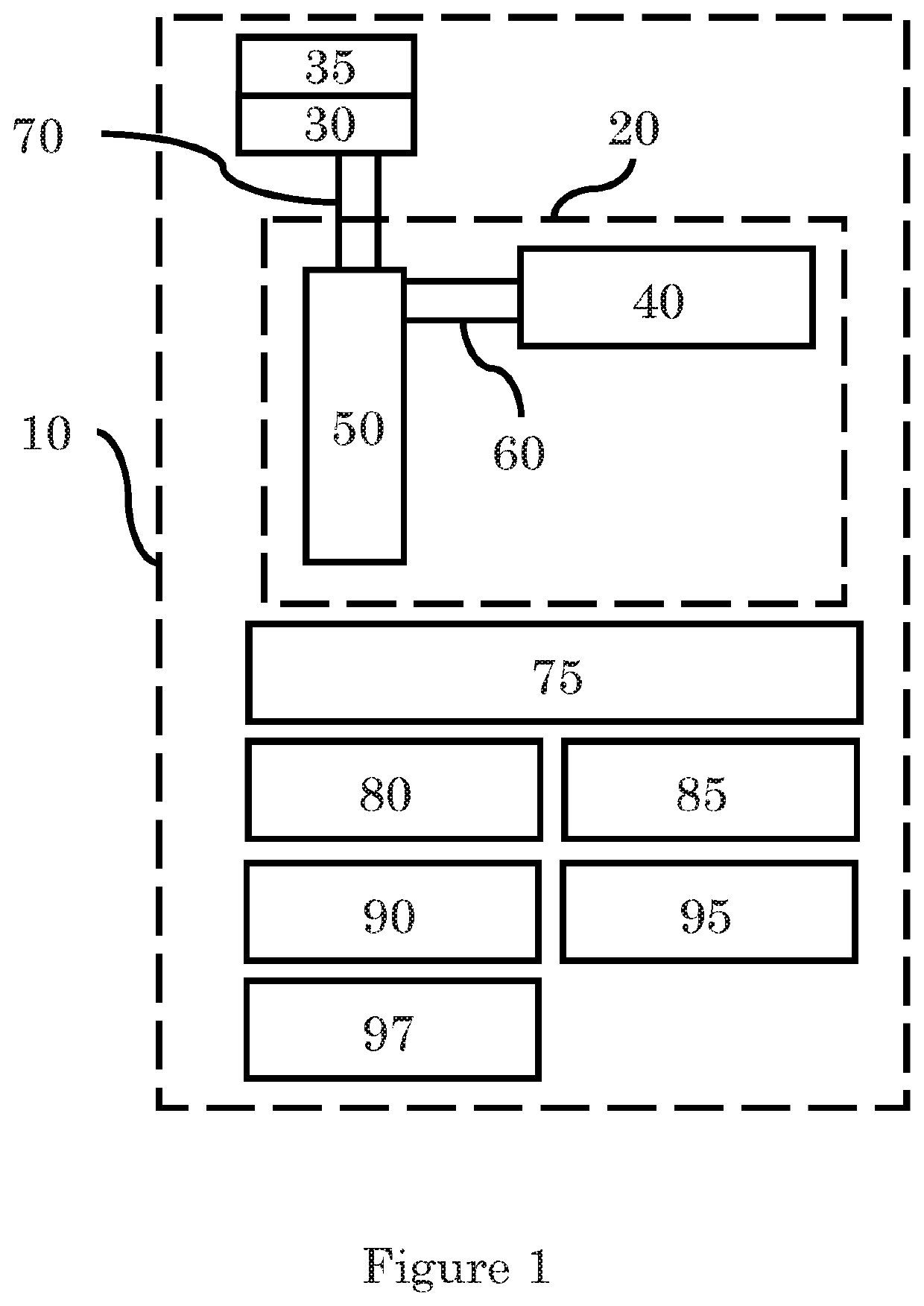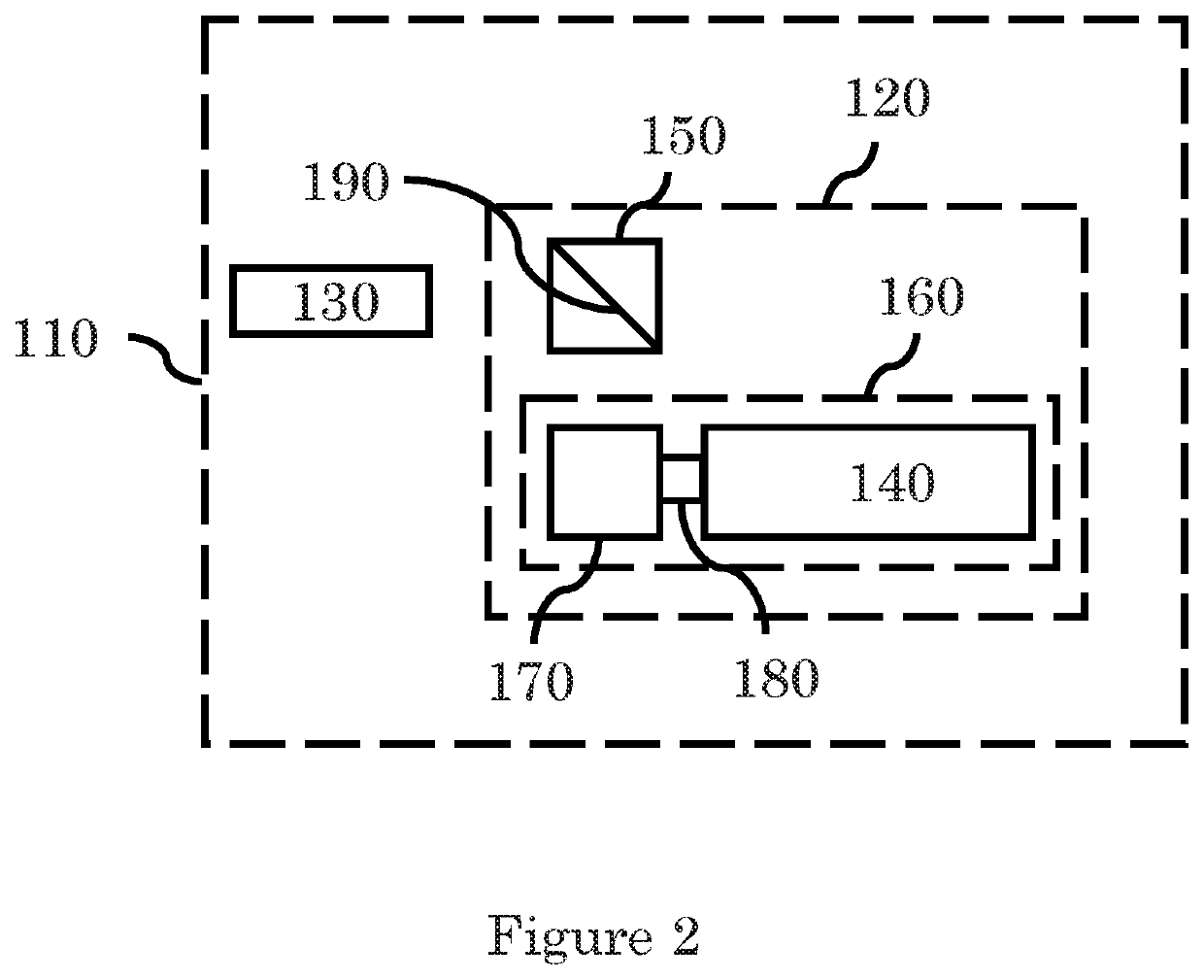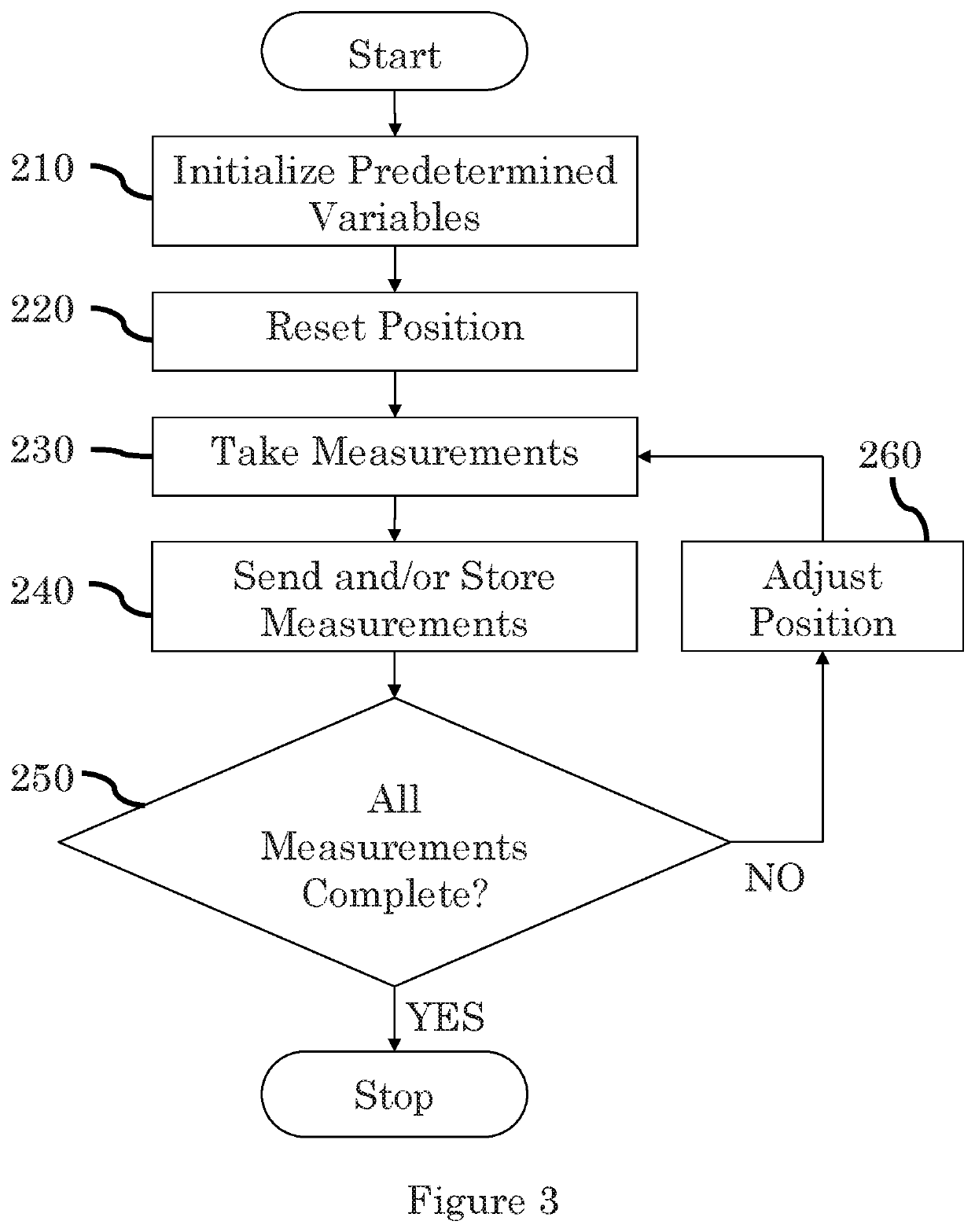Spherical-motion average radiant temperature sensor
a radiant temperature sensor and spherical motion technology, applied in the direction of heat measurement, optical radiation measurement, instruments, etc., can solve the problems of inability to easily provide information about the mrt of multiple parts of a location, the most accurate system to date requires a very expensive and time-consuming process, and the use of black-globe thermometers
- Summary
- Abstract
- Description
- Claims
- Application Information
AI Technical Summary
Benefits of technology
Problems solved by technology
Method used
Image
Examples
Embodiment Construction
[0013]Disclosed is a mean radiant temperature sensor device, comprising a two degree-of-freedom motion system and at least a non-contacting temperature sensor. The measurements made by the sensor(s) are directed using the two degree-of-freedom motion system such that multiple measurements can be taken that comprise all or a fraction of the surface of an imaginary sphere surrounding the device. The two degree-of-freedom motion system requires a system with at least two degrees-of-freedom whether that motion relies on motion along an axis, or rotation around an axis. Although a device or system capable of operating with three or more degrees of freedom is envisioned, preferably only two degrees-of-freedom are utilized in a given device or system—for most purposes, two degrees of freedom will provide sufficient sensor coverage.
[0014]Further, the two degree-of-freedom motion system is not limited as to how the two degrees of freedom are controlled. The system may incorporate a variety o...
PUM
| Property | Measurement | Unit |
|---|---|---|
| diameters | aaaaa | aaaaa |
| specific angle | aaaaa | aaaaa |
| degree field of view | aaaaa | aaaaa |
Abstract
Description
Claims
Application Information
 Login to View More
Login to View More - R&D
- Intellectual Property
- Life Sciences
- Materials
- Tech Scout
- Unparalleled Data Quality
- Higher Quality Content
- 60% Fewer Hallucinations
Browse by: Latest US Patents, China's latest patents, Technical Efficacy Thesaurus, Application Domain, Technology Topic, Popular Technical Reports.
© 2025 PatSnap. All rights reserved.Legal|Privacy policy|Modern Slavery Act Transparency Statement|Sitemap|About US| Contact US: help@patsnap.com



